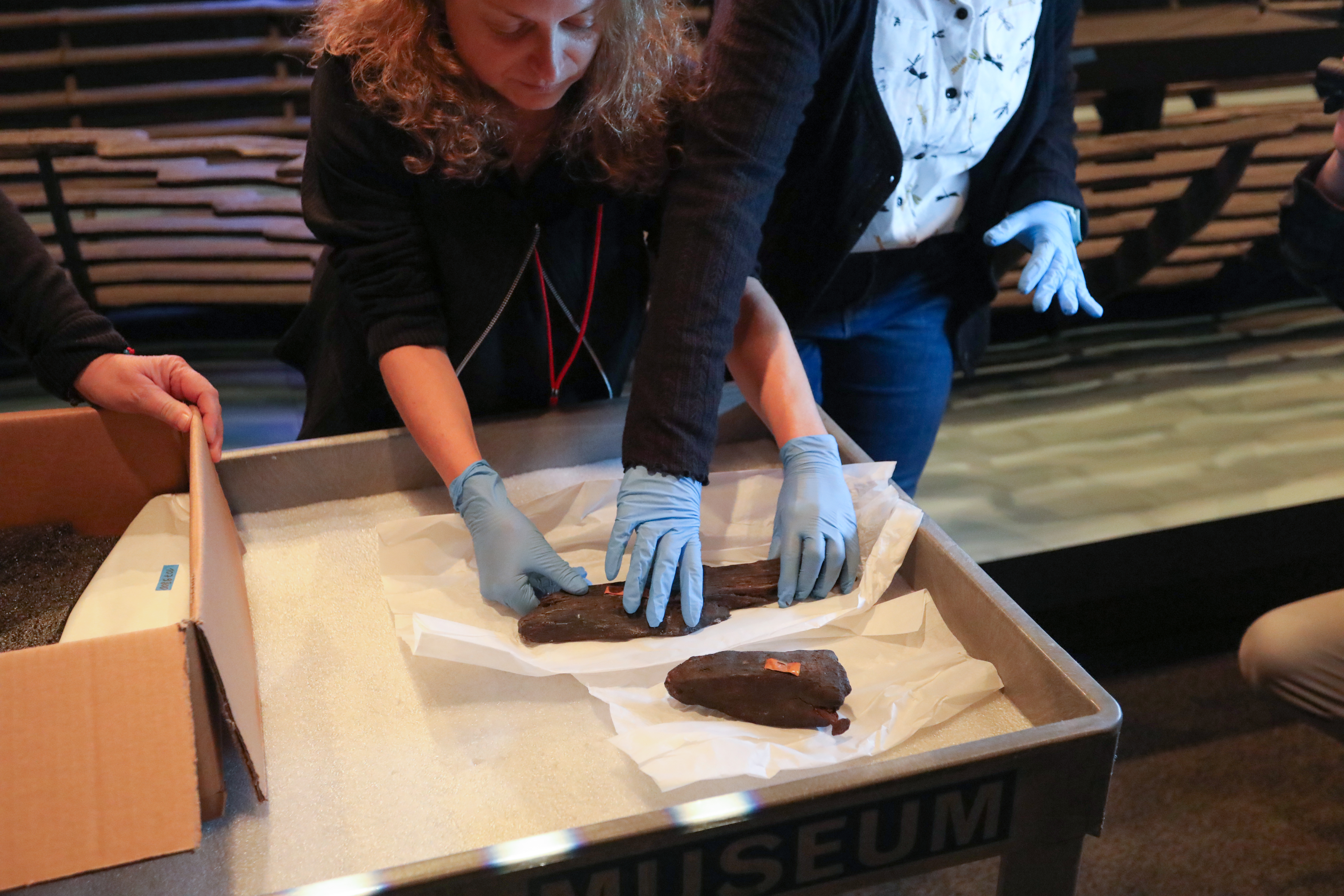The Dead Sea Scrolls Return to the States
‘This exhibit is not just about history or items from the past; it’s about understanding the context in which our Christian faith took shape,’ explained Father Juan Ochoa.

The Dead Sea Scrolls are returning to American shores for the first time in nearly a decade. “Dead Sea Scrolls: The Exhibition,” featuring scroll fragments from ancient Israel, including pieces of a first-century boat found in the Sea of Galilee, opened at the Ronald Reagan Presidential Foundation and Institute in Simi Valley, California, on Nov. 22.
“With so much upheaval going on [in the world], particularly in the very place where these artifacts originated, this exhibition offers a tangible connection to a timeframe sacred to both Jewish and Christian faiths,” said Melissa Giller, chief marketing officer at the Reagan Foundation.
Just as relics and other artifacts were brought from the Holy Land by medieval pilgrims, “Dead Sea Scrolls: The Exhibition” enables visitors to feel ancient Israel up close, Giller said.

The namesake of the foundation hosting the exhibit, President Ronald Reagan (1911-2004), strongly advocated for Israel during his two-term presidency. Israel and the United States “will always remain at each other’s side,” Reagan once said. For both his gubernatorial and presidential inaugurations, Reagan chose a family Bible opened to the Old Testament.
The artifacts for the exhibit were brought to the U.S. by curators from the Israel Antiquities Authority (IAA), an Israeli independent government entity that regulates excavation and conservation.
“You can’t love archaeology without loving the Dead Sea Scrolls,” said Joe Uziel, head of the Dead Sea Scrolls Unit at the IAA. “These are texts that give you a connection to people from 2,000 years ago.”

Discovered between 1946 and 1956 in the Qumran Caves on the West Bank of Israel, the Dead Sea Scrolls date from third century B.C. to first century A.D. Not only do they include the oldest surviving manuscripts of biblical books (apart from Esther), they reveal details about Second Temple Judaism and early Christianity.
“This exhibit is not just about history or items from the past; it’s about understanding the context in which our Christian faith took shape,” explained Father Juan Ochoa, director for the Office of Divine Worship for the Archdiocese of Los Angeles. “These ancient texts provide a fascinating glimpse into the life, faith and practices of the Jewish community around the time of Jesus.”
One of the first scroll fragments on display is one sheet of the Great Psalms Scroll, written in square Hebrew script and dated to the first century A.D. So sensitive and fragile are the scrolls they are allowed to be in light for only three months every five years, Giller said. To honor the priority of preservation, the curators will bring a new set of scrolls every three months during the exhibit’s nine-month run at the Reagan Library.

In addition to the 24 different Dead Sea Scroll fragments, the exhibit features around 200 artifacts from Israel’s “National Treasures” of the IAA. This includes a replica of the Sea of Galilee Boat, also called the “Jesus Boat,” evoking Luke 5:1-11, when Jesus taught the people from Peter’s boat. The replica includes actual wood pieces from a first-century fishing vessel discovered in 1986 along the northwest shore of the Sea of Galilee during a severe drought. The reconstruction on display for the exhibit measures 27 feet in length and 7.5 feet in width.
Another item on display is the Magdala Stone, which features intricate carvings of the Temple and the earliest known synagogue images of the Temple Menorah, the seven-branched candelabrum used in the Tabernacle and Temple. The phenomenally intact designs on the stone provide a look into how synagogues function as sacred spaces before the destruction of the Temple by the Romans in A.D. 70.

A portion of the Western Wall is also part of the exhibit, an addition that has seen visitors pray before it and leave notes, Giller remarked. The iconic wall was built by King Herod on the western flank of the Temple Mount.
Uziel believes the exhibit serves as a bridge between two worlds. “The world has changed over the past 2,000 years into a totally different world, but many things stay the same,” Uziel said. “People are looking for the same things, whether it’s belief, family, making their lives better or improving the lives of others.”
“The exhibit is a unique opportunity to see firsthand the physical evidence of our faith’s rich history,” said Father Ochoa. “It is a chance to reflect, to learn, and to be inspired by the enduring legacy of the word of God that has been transmitted for over two millenniums.”
“At the same time, this exhibit is an opportunity to strengthen our faith and renew our commitment to live out the Gospel with a deeper appreciation of our shared history,” Father Ochoa added.
The curators are planning for more U.S. locations following the exhibit’s stint at the Reagan Library. Its timeline in the States coincides with the prospect of a cease-fire between Israel and Hamas. And it was Ronald Reagan himself who said, “Within the covers of the Bible are the answers for all the problems men face.”
LEARN MORE
Tickets can be purchased by visiting the Reagan Foundation website. Giller recommends buying in advance; she noted the first visitors in the exhibit’s opening days took about 60 minutes to explore it in totality.
- Keywords:
- dead sea scrolls
















